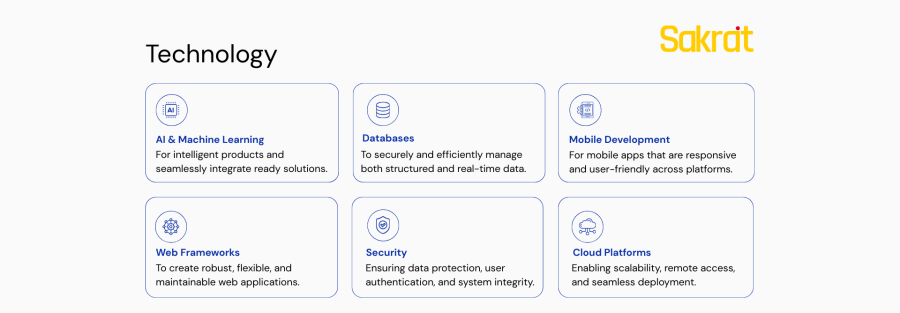The term “AI” is everywhere, often wrapped in futuristic hype that feels disconnected from the day-to-day realities of running a business. But behind the buzzwords, a practical revolution is already underway: AI workflow automation.
Unlike rigid, rule-based systems of the past, modern AI-powered automation can learn, adapt, and handle complex, unstructured tasks that once required constant human intervention. This isn’t about replacing people; it’s about augmenting your workforce, freeing your team from repetitive, low-value work to focus on strategy, creativity, and growth.
Forget theoretical benefits. Here are seven real-world business problems you can solve with AI workflow automation right now.
1. The Problem: Drowning in Invoices and Financial Paperwork
Your finance team spends countless hours manually entering data from invoices, matching them to purchase orders, and chasing approvals. This process is slow, expensive, and prone to human error, leading to late payments and strained vendor relationships.
The AI Solution: Automated Invoice Processing and Financial Analysis
AI-driven systems can automatically capture, extract, and validate data from invoices in any format like PDFs, emails, or scanned documents. For example, Five Sigma, a claims management platform, used AI to automate its processes, resulting in an 80% reduction in errors and a 25% increase in adjustor productivity. These workflows can match invoices with purchase orders, flag discrepancies, and route them for approval, all without manual intervention. For analysts, AI tools like Deutsche Bank’s DB Lumina can accelerate research that once took days into minutes.
2. The Problem: A Slow and Biased Hiring Process
Screening hundreds of resumes for a single position is a massive time sink for your HR department. The manual nature of this process can also introduce unconscious bias, causing you to overlook qualified candidates.
The AI Solution: Intelligent CV Screening and Candidate Matching
AI tools can screen resumes in seconds, objectively matching candidate skills and experience against job requirements. The workflow doesn’t just stop at screening. It can automate interview scheduling, send personalized follow-ups, and even assist with employee onboarding. American Addiction Centers used AI to reduce its employee onboarding time from three days to just 12 hours. This frees up your HR team to focus on the human side of recruiting building relationships with top talent.
3. The Problem: Overwhelmed and Inefficient Customer Support
Your support agents are overwhelmed with repetitive queries, leading to long wait times and frustrated customers. As ticket volumes grow, service quality drops, and agent burnout skyrockets.
The AI Solution: AI-Powered Customer Support Agents
An AI-powered agent can instantly handle first-level customer queries by drawing knowledge from your internal documents (like a Google Drive or knowledge base). The system can understand the customer’s intent, provide accurate answers, and create a draft response for the human agent to review and send. This empowers your support team to focus on complex, high-stakes customer issues that require a human touch. DBS Bank successfully reduced customer call handling times by 20% by implementing this kind of AI solution.
4. The Problem: Unplanned and Costly Equipment Downtime
In manufacturing, construction, or energy, an unexpected equipment failure can bring operations to a grinding halt, costing millions in lost production and emergency repairs.
The AI Solution: Predictive Maintenance and Resource Management
By installing sensors that collect data on temperature, vibration, and performance, AI can predict equipment failures before they happen. Toyota Motor Corporation implemented this strategy and reported a 25% reduction in downtime and annual cost savings of $10 million. The AI workflow automatically analyzes data, identifies anomalies, schedules maintenance during planned downtime, and even orders the necessary parts, transforming maintenance from a reactive firefight to a proactive strategy.
5. The Problem: Content Creation That Can’t Keep Up with Demand
Your marketing team is under constant pressure to produce high-quality blogs, social media updates, and marketing copy at scale. This often leads to a bottleneck where strategy takes a backseat to pure execution.
The AI Solution: Automated Content Generation and Repurposing
AI can’t replace the strategic mind of a marketer, but it can be an incredibly powerful assistant. SEO agency House of Growth used AI tools to double its article output from 80 to 160 per month without hiring more staff. By using AI to generate outlines from keywords, create first drafts, and repurpose existing content for different channels, they saved over 85 hours per month. This allows the team to focus on high-level strategy and campaign optimization.
6. The Problem: Tedious and Time-Consuming Meeting Documentation
Your most valuable employees spend hours in meetings, and then more hours writing and distributing notes. Key decisions and action items get lost in translation or forgotten entirely.
The AI Solution: Real-Time Meeting Transcription and Summarization
AI agents can join your virtual meetings, transcribe the conversation in real time, and then provide a concise summary with key discussion points, decisions, and action items. Commerzbank, a major German bank, implemented an AI agent to automate the documentation of client calls, freeing up financial advisors to focus on building client relationships instead of tedious administrative work.
7. The Problem: Siloed Data and Inefficient Cross-Departmental Workflows
Your business relies on complex processes that span multiple departments from legal and finance to operations and sales. Outdated, code-heavy systems make it difficult to share data and collaborate, leading to bottlenecks and compliance risks.
The AI Solution: No-Code Automation Platforms
Modern no-code AI platforms allow non-technical users to build and automate complex, cross-departmental workflows. For instance, Dresser Natural Gas Solutions replaced its legacy logbooks with an automated system for approvals and records, improving compliance and saving time. Similarly, AI can automate the creation and approval of legal documents, ensuring compliance and streamlining contract management from start to finish. This breaks down data silos and empowers teams to build the efficient processes they need without waiting on IT.


